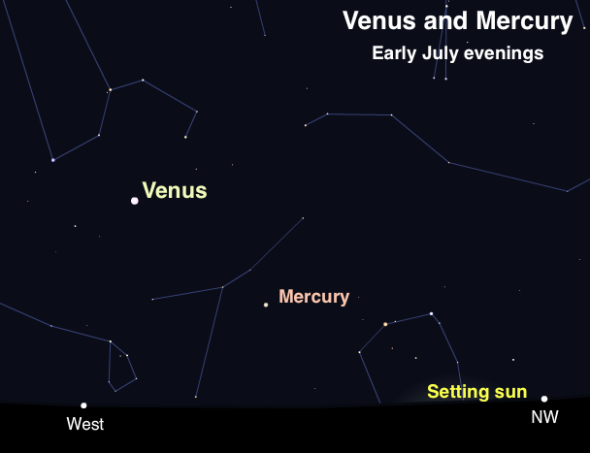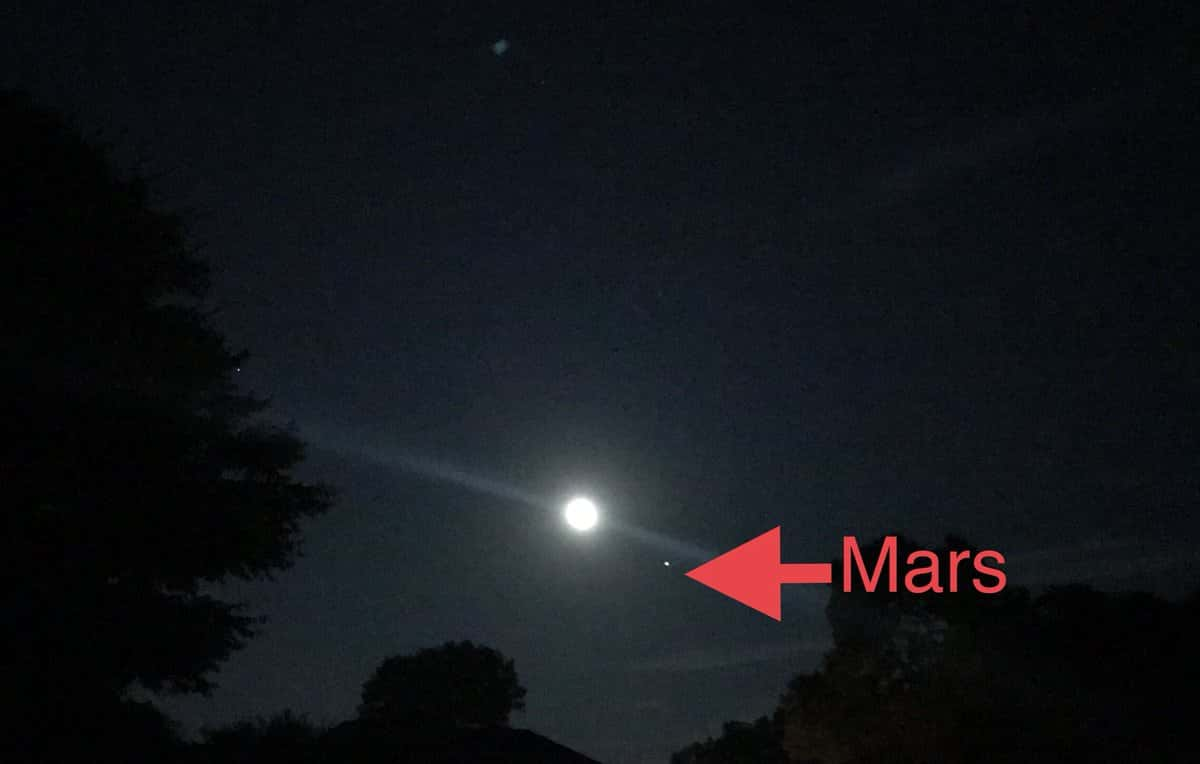
Posted by D Powell – While you’re getting ready to celebrate Independence Day with red, white and blue, prepare to see a lot of red in the sky in July. Mars will be at its brightest since 2003. Mars is now brighter than Jupiter in the night sky. You have probably noticed Jupiter which is high in the sky through the evening hours. Mars rises later, so many may not have seen the red planet, but Mars is rising early and growing brighter every day!
 Mars will remain brighter than Jupiter until September 19. The Red Planet is just about to reach the part of its orbit called opposition, where it is exactly opposite the sun in Earth’s sky. This year, it will also herald Earth’s closest view of Mars in 15 years. Earth and Mars orbit the sun at different distances. Because Earth is closer to the sun, it orbits faster than Mars. Once every two years (or thereabouts), the sun, Earth, and Mars create a straight line with respect to each other — the opposition. Opposition this year will happen on July 27, with the closest approach of Mars at 2:50 a.m. CDT on July 31. While Mars will look much brighter than usual, don’t believe the hoax saying that Mars will be as big as the full moon. That’s been circulating the internet since 2003, and it’s just as false now as it was then. In reality, Mars will be only 24.3 arc seconds wide from Earth’s perspective and will still appear as a bright, star-like object. The moon will appear 75 times larger, at 1,800 arc seconds, by comparison. We don’t want to forget about the evening planets! The next few nights will feature ideal viewing of Mercury, as it will be about as high above the horizon as it gets during the evenings hours. Mercury is usually shrouded in glare since it stays so close to the sun as we see it here on Earth. Draw a line from Venus to the setting sun and look for Mercury! Enjoy the beauty of the night sky.
Mars will remain brighter than Jupiter until September 19. The Red Planet is just about to reach the part of its orbit called opposition, where it is exactly opposite the sun in Earth’s sky. This year, it will also herald Earth’s closest view of Mars in 15 years. Earth and Mars orbit the sun at different distances. Because Earth is closer to the sun, it orbits faster than Mars. Once every two years (or thereabouts), the sun, Earth, and Mars create a straight line with respect to each other — the opposition. Opposition this year will happen on July 27, with the closest approach of Mars at 2:50 a.m. CDT on July 31. While Mars will look much brighter than usual, don’t believe the hoax saying that Mars will be as big as the full moon. That’s been circulating the internet since 2003, and it’s just as false now as it was then. In reality, Mars will be only 24.3 arc seconds wide from Earth’s perspective and will still appear as a bright, star-like object. The moon will appear 75 times larger, at 1,800 arc seconds, by comparison. We don’t want to forget about the evening planets! The next few nights will feature ideal viewing of Mercury, as it will be about as high above the horizon as it gets during the evenings hours. Mercury is usually shrouded in glare since it stays so close to the sun as we see it here on Earth. Draw a line from Venus to the setting sun and look for Mercury! Enjoy the beauty of the night sky.





